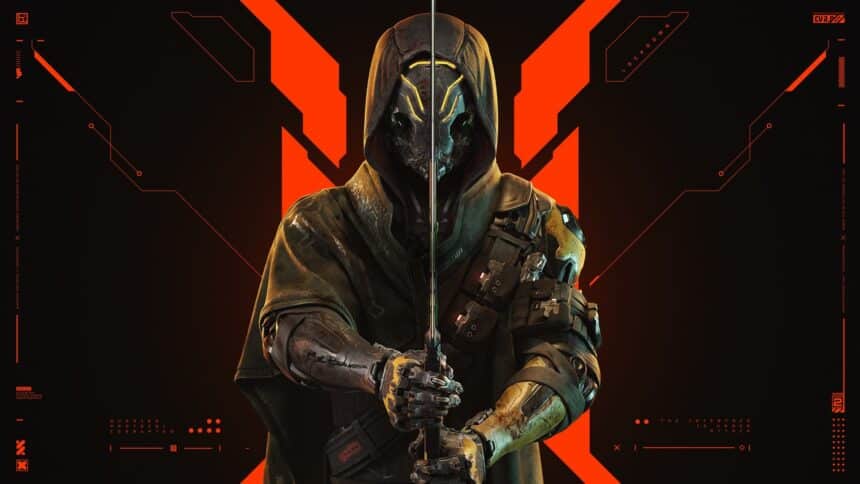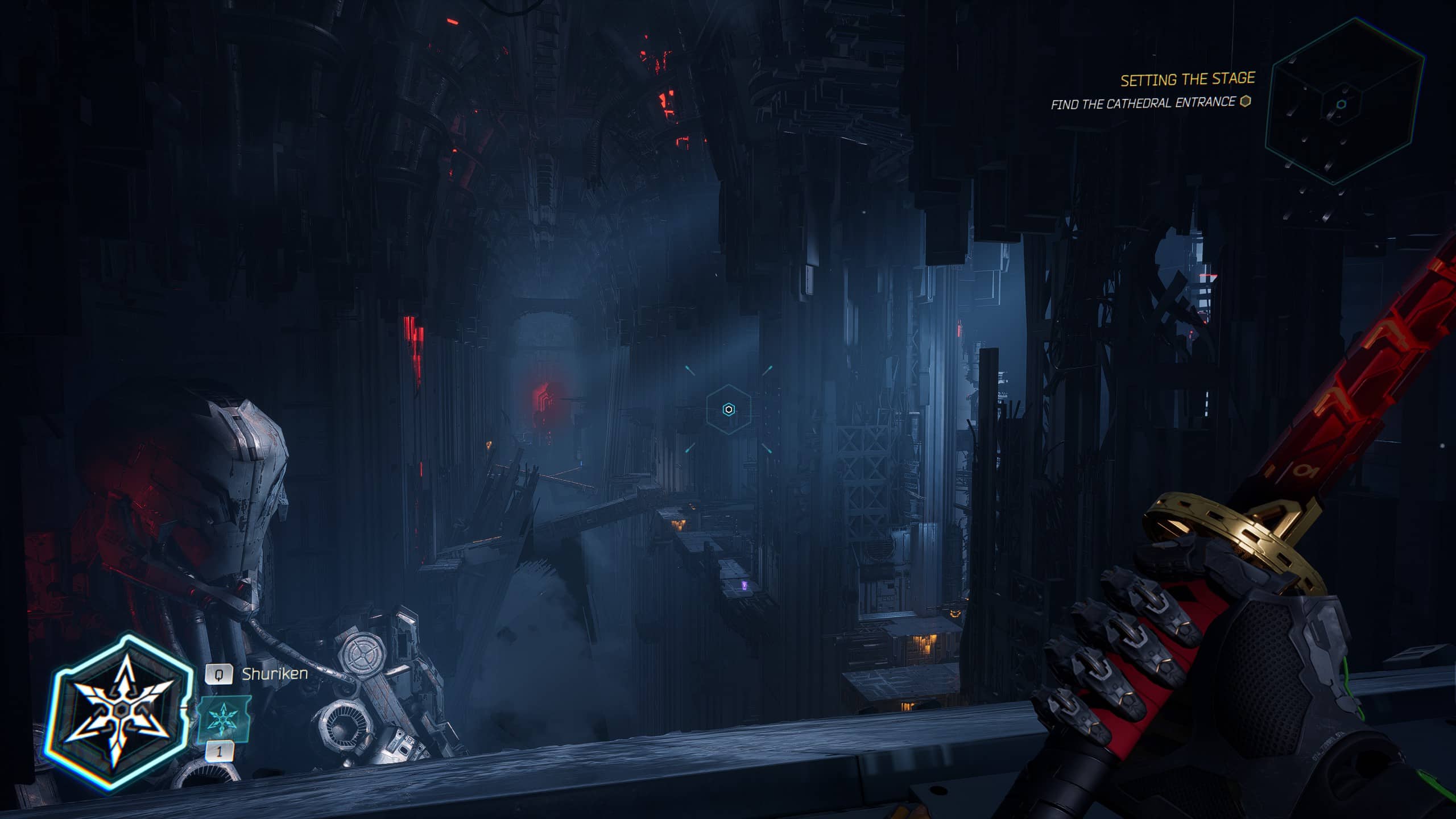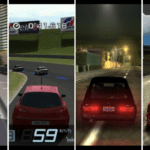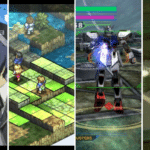Ghostrunner was one of my favorite games of 2020, and One More Level proved that the right mix of fast-paced combat, and first-person parkour can not only work but go toe-to-toe with a number of action titles on the market. In comes Ghostrunner 2, which adds a bike to the game. Do I still need to review this game? It has a bike now. Not just any bike, but a cyberbike!
Story and Characters
Ghostrunner 2 picks up a year after the events of the original game. Jack has taken out the Keymaster and ended her tyrannical reign over Dharma Tower leaving a power vacuum, ripe for all the different factions to exploit.

Thankfully, Jack, along with the resistance group now known as the “Interface Council” made up of friends and foes want to restore order to Dharma Tower. It’s never that easy, however, and a mysterious group of ex-Ghostrunners have taken an interest in the tower, and serve as the main antagonists of this game.
This expansion into the lore of the Ghostrunners allows for a deeper look into Jack himself, as well as the Architect responsible for the creation of these cyberninjas. The villains have a continued presence throughout the game and their motivations are made clear to Jack as he takes on each.

Compared to the first title, there’s a lot more dialogue here and an effort put into making side characters feel important. Jack cares about them, and he’s far more human than he ever was. A few characters can feel a bit obnoxious during their introductory encounters, but everyone grew on me throughout the course of the campaign.
Most of your conversations are through the radio, and never at the expense of your movement. There is some downtime between missions, but it never feels like the game is wasting your time by forcing you to move at a fixed, slow pace while it bombards you with exposition.
The overall tone of the writing and character interactions are generally lighter and hopeful this time around, and you can see plenty of growth in Jack’s character. The villains were quite interesting to listen to and follow, with motivations that felt more realistic, especially with the lore behind their creation.
Combat and Blocking
The combat has been expanded in Ghostrunner 2 with the inclusion of a block mechanic. You could always parry in the first game, but now, you can also block incoming attacks at the cost of the stamina bar. You still kill enemies with one-hit and die with one-hit as well, but blocking gives you some breathing room, and you’re going to need it.

Blocking does make combat encounters feel more approachable, but as more enemy types are introduced, reserving stamina for better attacks becomes a priority. This addition doesn’t exactly make the game easy but allows you to get more creative, forcing you to make more use of your skills.

Dying is a normal part of the Ghostrunner experience, and instant respawn means you’re never discouraged to bang your head right back at that annoying enemy who keeps messing up your combo. Speaking of, combat areas are now wider to compensate for your added abilities. This allows for the level designers to be a bit more creative in providing the player with more maneuverability in terms of how to clear out enemies in a given area.

The puzzle-like enemy placement is everpresent, and figuring out the best steps culminates into a montage of effortless kills that you totally didn’t get right after 30 attempts. Learning how to handle each enemy type becomes a necessity, and I primarily focused on using the Shuriken to cripple, and essentially blink towards them.
Boss Fights
Boss fights are a different story, and take a bit of effort to get through. I think the overall quality of the fights has significantly improved over the last one.

I particularly like the fights that make use of your parkour abilities as well, but the more direct fights can rely a bit more on trial and error than raw skill. The first-person perspective has its limitations, which are evident when you’re hit by an attack from off-screen. I don’t want to spoil anything here because some of the later bosses are visual stunners, and evolve throughout the fight.
Upgrades and Exploration
Ghostrunner 2 uses a chip-based system for upgrades. This means that you’ll need to find shards to unlock space for additional passive bonuses that can facilitate your playstyle. I like this system because it encourages you to pay a bit more attention to your environment, and it also forces you to meaningfully invest in different aspects of your build.

These upgrades are divided into different categories, and you can only equip the abilities of the same type in a column. So if you start the node with traversal, the subsequent abilities must match the starting traversal node. This means you have to commit to a certain playstyle and invest in areas that are more important to you.
You can freely swap these out at any time and are given enough resources to buy abilities without worrying about missing out. It isn’t a permanent investment, and you’re free to tweak Jack to your liking. I focused on traversal, system, combo bonuses, and the Shuriken. This combination meant I had greater control over movement, faster stamina recharge, and cheap shurikens.
If you want, you can tailor your build around parrying, and swordplay. There are some sections that I didn’t even touch, which focused on stealth, and your Tempest Push. Either way, each small upgrade actually contributes to your build, and it’s eons better than the minor bonuses a lot of modern RPG-lite titles reward you with.
Parkour and Puzzles
While the combat is one aspect of Ghostrunner, the parkour, and traversal are equally important, if not more so. Moving around Dharma Tower is still a delight, and there is no shortage of excellent platforming sections to keep you engaged. You’ll jump, dodge incoming fire, use your sensory boost to change your trajectory, wall-run, grapple, and slide in this cyberpunk playground as the world blurs around you.
The levels are huge, and the way Jack is propelled through the level makes for some exhilarating sequences. It’s never a cutscene where you’re looking at Jack performing these insane stunts, but you, the player who is actively in control of each step. Enemies are introduced in these sections as well, and you’ll likely die quite a few times getting through some of the trickier sequences.
The parkour is possibly my favorite part of both Ghostrunner games and the level designers have outdone themselves with the way they handle the flow of movement. The more familiar you become with Jack’s traversal abilities, the more rewarding it feels to get through obstacle courses without missing a single step. I replayed some of the earlier levels after beating the game, and I surprised myself with how fast I blasted through those.
There are some light puzzles here and there too, but for the most part, it’s mostly just moving one thing, and hitting another. Some of the later ones in the cybervoid can be a bit tricky, but you’re not really solving a complex solution, but rather figuring out the fast path to complete a timed sequence.
Bike and Semi-Open World
At one point in the campaign, you actually leave Dharma Tower, and you do so on a bike. The bike sections in this game involve boosting through different obstacles, jumping over platforms, avoiding blockades, and shooting enemies too. It feels great, and I had an absolute blast as I circled around tunnels, shot at cyberbugs, and blasted enemies to bits.

When you’re actually out in the world though, you have access to the bike for traversal. Make no mistake, the outside world isn’t a traditional open-world, but mostly a backdrop. Slowing down and trying to “explore” only leads to awkwardness as there isn’t really anything to do, and the bike doesn’t always play well with the terrain, often lodging itself in rocks or debris.

Your job is to reach different areas using the bike and take out any enemies on the way. I’m a bit torn on the semi-open world. The bike is great, I love it, don’t get me wrong, but I’m not sure why this much open area was needed when more tightly designed levels could’ve been used instead.

I understand the intent of giving you the feeling of openness but even the missions outside Dharma don’t really make use of this open space too often. There is a particular boss fight that I really liked, but outside of that, you’re essentially going to different areas that turn into traditional obstacle courses mixed in with excellent combat.
So, while the bike is great, the semi-open world feels a bit misplaced and doesn’t contribute to the tightly designed structure of the game. It does add to the narrative, yes, but it’s at the cost of consistent quality you engage with in Dharma.
Presentation
Ghostrunner 2 is a marvelous game to look at. It expands on the excellent art direction of the first title and continues to impress throughout its campaign. The Dharma megastructure with its neverending tunnels, towering building complexes, monolithic statues, and dense markets never fails to impress with the sheer diversity in its environments.

The quality of assets, the texture-work, and the general design of the newer enemies are fantastic all around with a great blend of cybernetics and military-esque attire. You also have tons of weapon skins scattered around the map to collect, and those completely change the look of your sword.

Things outside Dharma are barren, and lifeless, painting a dystopian hellscape that serves as a complete contrast to what’s inside. Despite my gripes with the semi-open world, it’s hard to deny the work put into creating a believable world abandoned decades ago with the only life clinging on being the one that’s out to scavenge your parts.

Ghostrunner 2’s OST features multiple synthwave artists and it’s fantastic. It suits the cyberpunk world perfectly and there are multiple tracks I already have on repeat. There’s not a lot to say here, and if you’re a fan of the recent emergence of retrowave synth music, you’ll have a great time with this.
PC Performance
Despite my enjoyment of the title, I’m sad to report that the PC version has stuttering problems. These occur when you enter a new area or with the introduction of some new visual effect, like lasers. When it’s running great, the action feels smooth and responsive, and I had no trouble maintaining around 80-100 FPS on my RTX 3060 with DLSS set to Quality at 1440p with the highest settings. However, the stutters were frequent, especially in the semi-open world.

I didn’t have access to ray-tracing in the review build, but the game did have DLSS and FSR 2.0 support. There is a shader compilation screen at the start, but sadly, that doesn’t do much to alleviate the stuttering, and I believe these stutters are because of the shader compilation because replaying certain areas didn’t introduce the stutter again.
This was an issue in the first game as well, and I really hope it’s something the developers are already working on. It’s definitely noticeable in an action game like this and gets in the way of the fast-paced experience.
Verdict
Overall, I think Ghostrunner 2 manages to improve on the original in almost every way, and it’s a must-play action game. The combat feels dense with tons of abilities to mess around with, and the parkour shines thanks to the excellent level design both in and out of Dharma. The bike is a welcome addition and complements Jack’s combat and parkour abilities with exhilarating sequences to drive through.
The semi-open world sections feel a bit undercooked with a few bugs that halt the fast-paced flow of the otherwise tightly designed sequences found in the world. Lastly, the PC version has some stability issues including the dreaded traversal stutter we often see in Unreal Engine titles.
Ghostrunner 2 is a sequel with a lot of confidence, and it pays off. It’s one of the best games of the year and thoroughly entertained me throughout its 11-hour campaign.
What did you think of our Ghostrunner 2 Review? Share what you think about it in the comments below.
This review is based on the PC version of Ghostrunner 2. The key was provided by Diva Agency and 505 Games.











